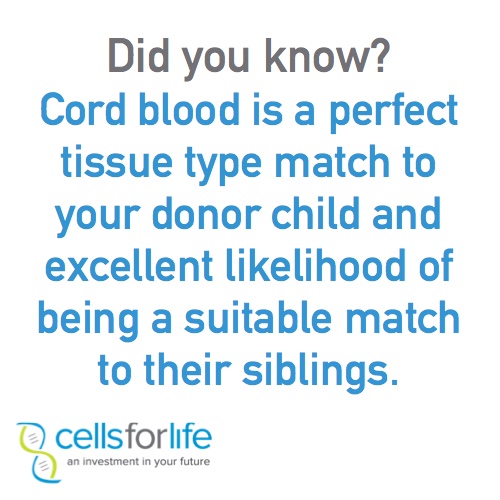Congratulations! You’re going to be a parent.
The next 9-months will be spent worrying about what to eat and what not to eat; making decisions about using “cloth” versus “disposable” diapers; and basking in the anticipation of more joy than you can possibly know what to do with.
During the magical time before baby comes, the last thing you or your partner want to do is explore the possibility that something, at some point, could go wrong. While we all hope for the absolute best when it comes to the health of our children, as a parent, you constantly have to prepare for the worst; and that’s where we come in.
Cord Blood Awareness Month
In celebration of Cord Blood Awareness Month, we want to break down the facts about umbilical cord blood banking.
In an effort to help you understand more about cord blood and the cord blood collection process, we’ve compiled a list of ten things you need to know about banking your baby’s cord blood.
10 Things you Need to Know About Cord Blood Banking
- Cord Blood Banking is Pain-Free
Cord blood is collected after the umbilical cord has been cut. It is entirely pain-free for both mother and baby.
- Cord Blood Banking Takes Less Than 5 Minutes to Complete
While you’re busy snuggling with your newborn, members of the Cells for Life collection team take a sample of your baby’s umbilical cord blood for immediate storage. You won’t even know we’re there!
- Cord Blood Stem Cells are Used to Treat Multiple Diseases
Stem cell transplants are currently the standard therapy for patients with bone marrow diseases. Click here for an entire list of diseases treated using stem cells taken from umbilical cord blood.
- Cord Blood Banking Does not Interfere with Delayed Cord Clamping
Interested in delay cord clamping as well as cord blood clamping? No problem. You can do both. Learn more in our blog: “Delayed Cord Clamping or Cord Blood Banking?”
- Cord Blood Banking is Insurance for the Whole Family
Stem cells taken from your baby’s umbilical cord blood are a definite match for the donor child and there is an excellent likelihood that they could be suitable matches for the donor’s siblings as well. Banking your baby’s cord blood is insurance for the whole family.
- Cord Blood Banking is Ethically Sound
Unlike embryonic stem cells, there are absolutely no ethical or religious concerns associated with using stem cells taken from umbilical cord blood.
- Cord Blood Stem Cell Transplants are Considered Routine
More than 35,000 umbilical cord blood stem cell transplants have been performed worldwide. This type of transplant is now considered to be a routine procedure.
- Cord Blood can be Stored for Over 20 Years
Science shows cord blood can be stored for over 22.5 years and still function as expected, providing you and your family with peace of mind from infancy through to adulthood.
- 100% Transplant Success
When you bank with Cells for Life, you are supported by a team that has a 100% transplant success rate. This is a direct result of the dedication to the highest quality work, from collection to storage.
- Unused Cord Blood is Discarded as Medical Waste
Your baby’s umbilical cord blood is full of life-saving stem cells that could save a life. If you do not choose to bank or donate your baby’s cord blood, it becomes medical waste that will get discarded. Visit the Victoria Angel Registry of Hope for more information on donating your baby’s umbilical cord blood.
*References on file

